OKR reporting: A guide on how to report on OKRs
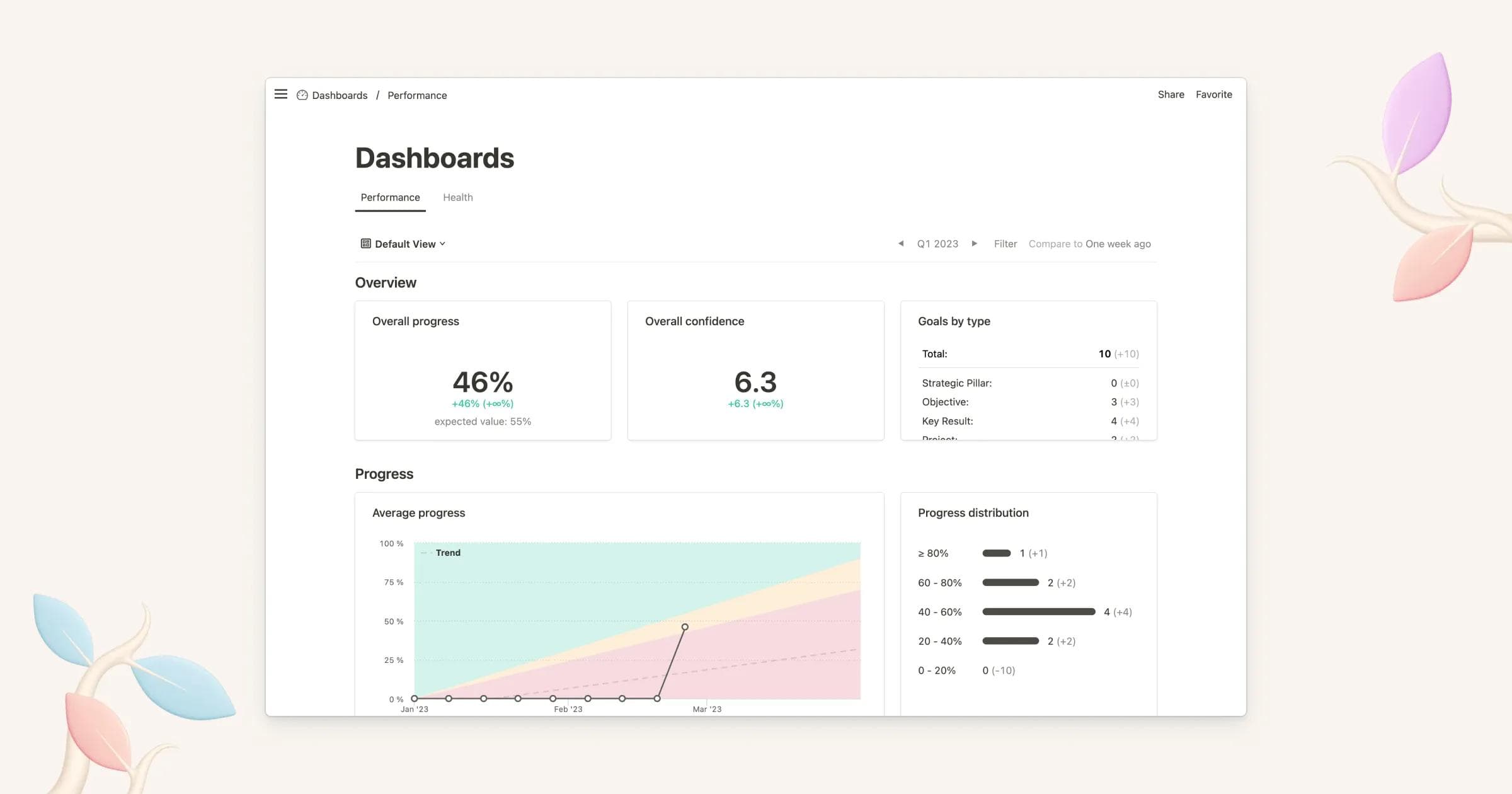
Using OKRs (short for "Objectives and Key Results") as a goal-setting framework makes it easier for companies to set priorities for day-to-day work. It aligns all employees with the company's vision. Progress should be continuously tracked and reflected. This is the only way to determine whether alignment is correct and the right goals have been set. Consistent OKR reporting is therefore mandatory rather than optional.
In this article, we explain why regular reporting is so important for working with OKRs. We'll also reveal our top five tips for OKR reporting.
What to expect:
- What is OKR reporting?
- Why is OKR reporting important?
- 5 tips and best practices for OKR reporting
- How you can track OKRs with Mooncamp
- OKR reporting FAQ
What is OKR reporting?
OKRs usually consist of two to four ambitious, qualitative Objectives per team and two to five measurable Key Results per Objective. The Objectives define what exactly you want to achieve. The Key Results express how you can tell that the goal has been achieved. They should include a key figure.
💡 Tip: If you want to brush up on OKR basics, it is best to take a look at our OKR guide.
Continuous OKR reports make all progress and updates on established OKRs visible to all stakeholders. They include:
- the progress of team OKRs and, if applicable, individual OKRs,
- the status quo of company-wide OKRs.
The frequency of reporting depends on the needs of the organization. Overall, two events are essential for OKR reporting: weekly check-ins and the OKR review at the end of each OKR cycle. Remote teams additionally coordinate their activities in short “daily stand-ups”.
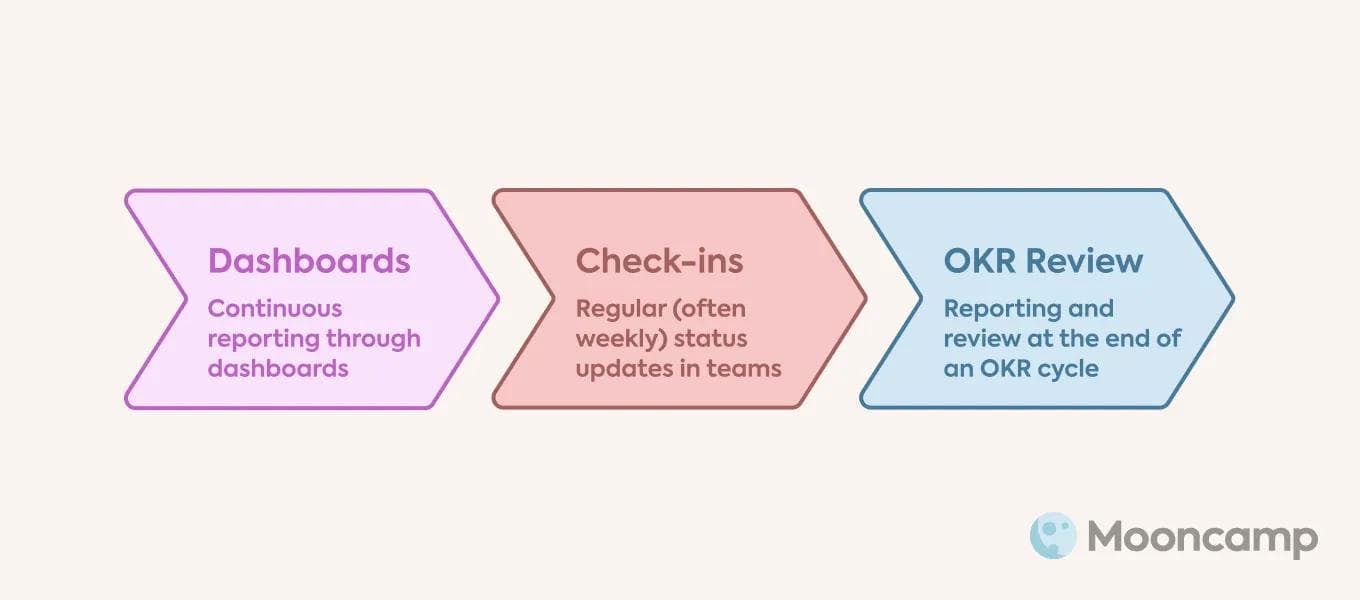
How does OKR reporting work? The basics
Let's take a closer look at the process:
- Ongoing reporting in dashboards: All employees are responsible for continuously tracking their own progress. This works best in a customizable dashboard within OKR software. For starters (or in small teams), simple OKR templates can also be helpful.
- Regular updates in check-ins: Weekly check-ins are the most important part of OKR reporting. They make sure that you don't lose track of your OKRs and that progress is visible to everyone at all times.
- Reflection at the end of an OKR cycle: At the end of each OKR cycle, an OKR review is held to review progress, record lessons learned, and to determine the next steps.
Overall, OKR reporting is an ongoing process that requires regular communication and collaboration between teams. This ensures,
- that all OKRs are aligned with each other,
- progress is tracked, and
- problems are identified and resolved in a timely manner.
Why is OKR reporting important?
OKR reports are important for several reasons:
- ➡️ Alignment: OKRs provide a clear framework for setting and tracking company Objectives. Regular OKR status reports help ensure that teams are better aligned and working toward the same goals.
- 👀 Visibility: OKR reports enable management or the leadership team to track progress and identify areas for improvement. This allows for problems or obstacles to be identified and timely action to be taken.
- ❗ Prioritization: Effective OKR reporting practices help employees prioritize tasks and focus on the most important goals. This improves their performance and productivity.
- ❓ Decision-making: Decisions are made in a data-driven manner, based on actual progress and performance. This can optimize the performance of a team or the entire organization.
- ⚙️ Improvement: Every OKR weekly report provides the opportunity to reflect on processes, learn from successes and failures, and make adjustments as needed. This helps companies to continuously improve.
In summary, OKRs are a way to align everyone in the company toward the same goals. OKR tracking helps maintain this alignment by providing insight into progress made.
It also highlights what is working well or not so well. With this information, companies can adjust their practices and avoid wasting time and resources.
Further benefits of OKR reporting
Ongoing OKR reports yield other benefits as well, including:
- Tracking progress in real time
- Increasing transparency
- Making responsibilities visible
- Keeping employee engagement high
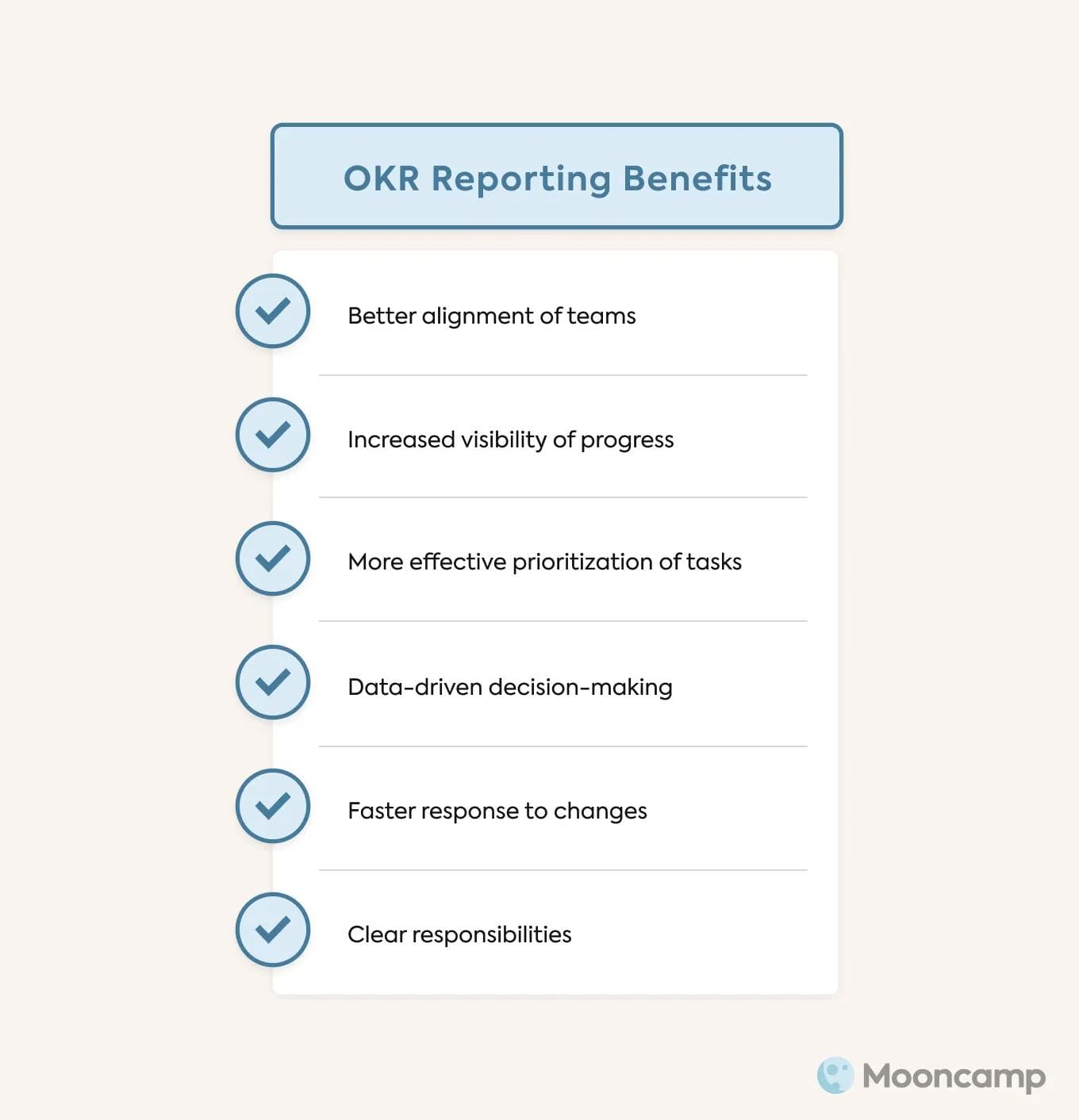
5 tips and best practices for OKR reporting
In practice, it can sometimes be difficult to maintain focus and stay consistent in OKR tracking and reporting. The following five tips and OKR best practices will make it easier.
Tip 1: Make tracking a habit
An important aspect of OKR reporting is that it must be done consistently. It loses its impact if it is carried out sporadically or not throughout the entire OKR cycle. To ensure that employees do not forget to document their progress, consider establishing a routine for OKR tracking with check-ins. These check-ins remind each team member to update their personal OKRs and share what they are working on or what their current priorities are. Short check-in reminders, for example via Slack or Microsoft Teams, ensure that everyone actually performs their check-ins.
💡 Tip: Our Google Sheets OKR Tracking Template can help you keep track of all OKRs when you're just starting out. However, if you are working more extensively with OKRs or in large teams, you should use OKR software to measure progress.
Tip 2: Discuss lessons learned regularly
Continuous learning is the be-all and end-all when working with OKRs. This is because the OKR goal setting methodology provides a framework and not a fixed set of rules. Accordingly, it is normal that it takes some time to optimally adapt the OKR system to the individual organizational context and company goals. For this to succeed, it is extremely important to track performance in achieving Objectives. This is the only way to learn from mistakes and to scale the OKRs in the company for the long term.
💡 Tip: We have summarized the most important OKR benefits in our blog.
Tip 3: Clearly define who is accountable
OKR tracking and reporting only works with clearly defined responsibilities. Why? Because it requires discipline to consistently track OKRs and report progress. If there is no designated person for this, no one will feel responsible in the end. Overall, OKRs are not a mere management task. Rather, the entire team should be involved. The more involved employees are in the OKR process, the more committed and motivated they are to contribute to the OKRs. Therefore, all expectations should be clearly defined at the beginning of each OKR cycle. That way, everyone knows exactly what they are accountable for.
Tip 4: Celebrate successes as a team
OKR reports should not feel like a chore, they should be fun. That's why it's important to not just talk about problems during check-ins. When Key Results are achieved or significant progress is made on an Objective, it should be celebrated. At Mooncamp, for example, you can react to good results in the check-ins directly in the tool (with emojis, images, or GIFs) or add comments. This keeps participants motivated and more willing to go the extra mile.
Tip 5: Let OKR software help you
OKR software makes an OKR status report much easier. The more employees the company has, the more important and useful OKR software becomes. For larger companies that need to keep track of many OKRs, it is even indispensable. Specifically, OKR software like Mooncamp supports OKR reporting by:
- Clearly visualizing goals, structures, responsibilities and progress, no matter how many teams there are.
- Serving as a central hub for communication and providing orientation.
- Simplifying weekly check-ins, as they can be performed directly in the software with a few targeted, customizable questions.
- Offering extensive evaluation and filtering options. This enables new insights to be gained and the process to be optimized on the basis of data.
💡 By the way: Mooncamp can be completely customized and offers extensive functions for OKR reporting.
How you can track OKRs with Mooncamp
Mooncamp offers a comprehensive OKR tracking tool that allows OKR reports to be completely flexible. This makes it easier for you to track how OKRs are evolving over time and identify OKRs at risk.
- Weekly check-ins (OKR Weekly) provide continuous feedback and a high level of participation and accountability within teams. In the OKR weekly report, employees can enter ongoing updates on their OKRs, comment on them, and also share ideas. Instead of extensive discussions in time-consuming meetings and email threads, progress is captured through a handful of targeted questions. Companies can easily create customized questions for different use cases.
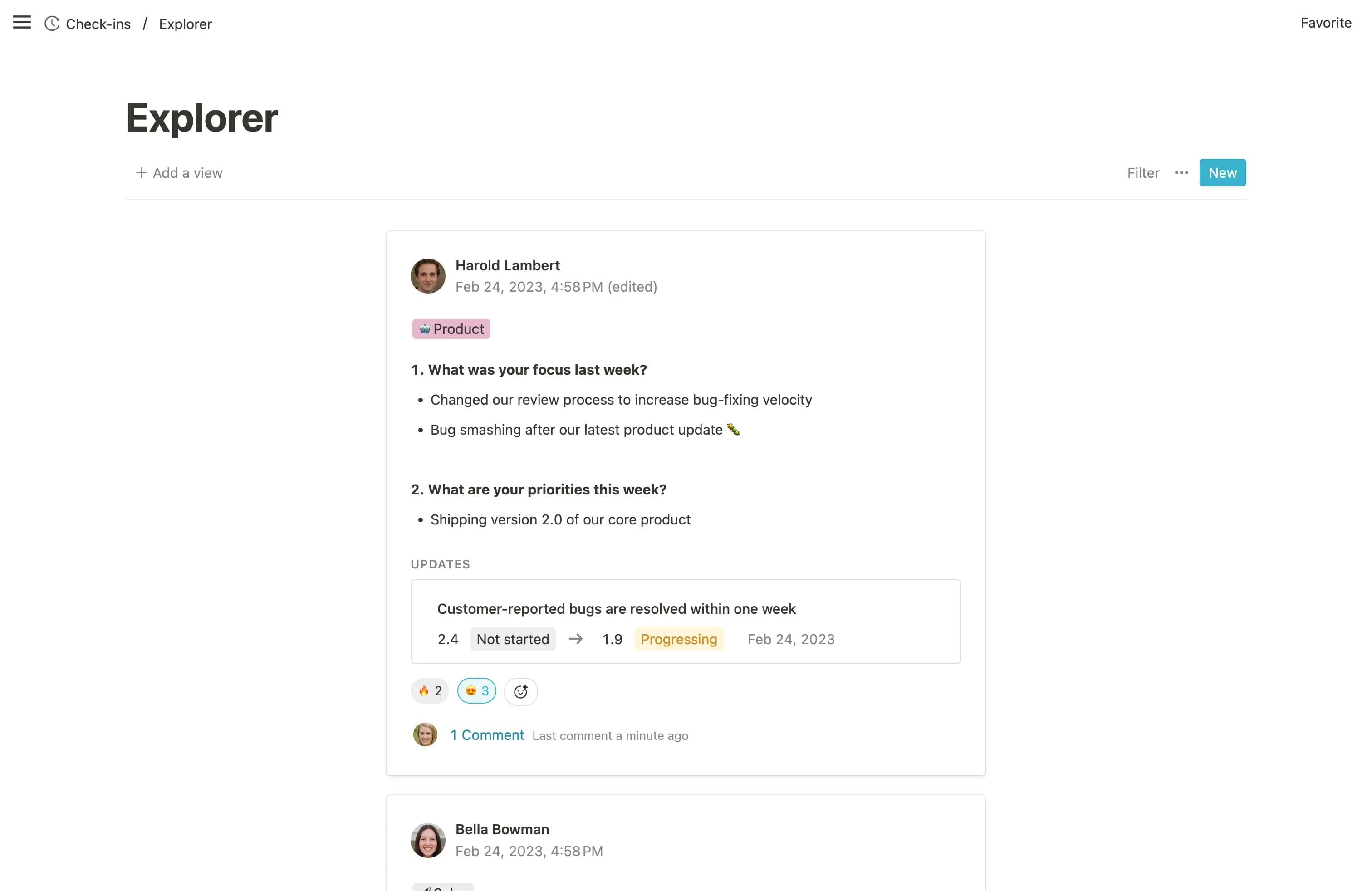
- Each OKR cycle culminates in an OKR review. In this meeting, all teams present their final OKR status report. All outcomes are recorded and reflected upon. The goal is to evaluate and analyze why OKRs were or were not achieved. The lessons learned are then implemented in the next cycle.
In addition, dashboards make OKR reporting and OKR measurement even more efficient.
Dashboards as an important OKR reporting tool
The Mooncamp Performance Dashboard provides information on the progress of all Objectives, broken down by team or employee. Not only can you see overall progress here but you can also check which goals have not yet been updated or are at risk.
The metrics table is particularly helpful for reporting. It shows at a glance
- how the goal progress of the employees compares,
- which departments have not yet updated their Objectives or
- where the last update of Objectives took place some time ago.
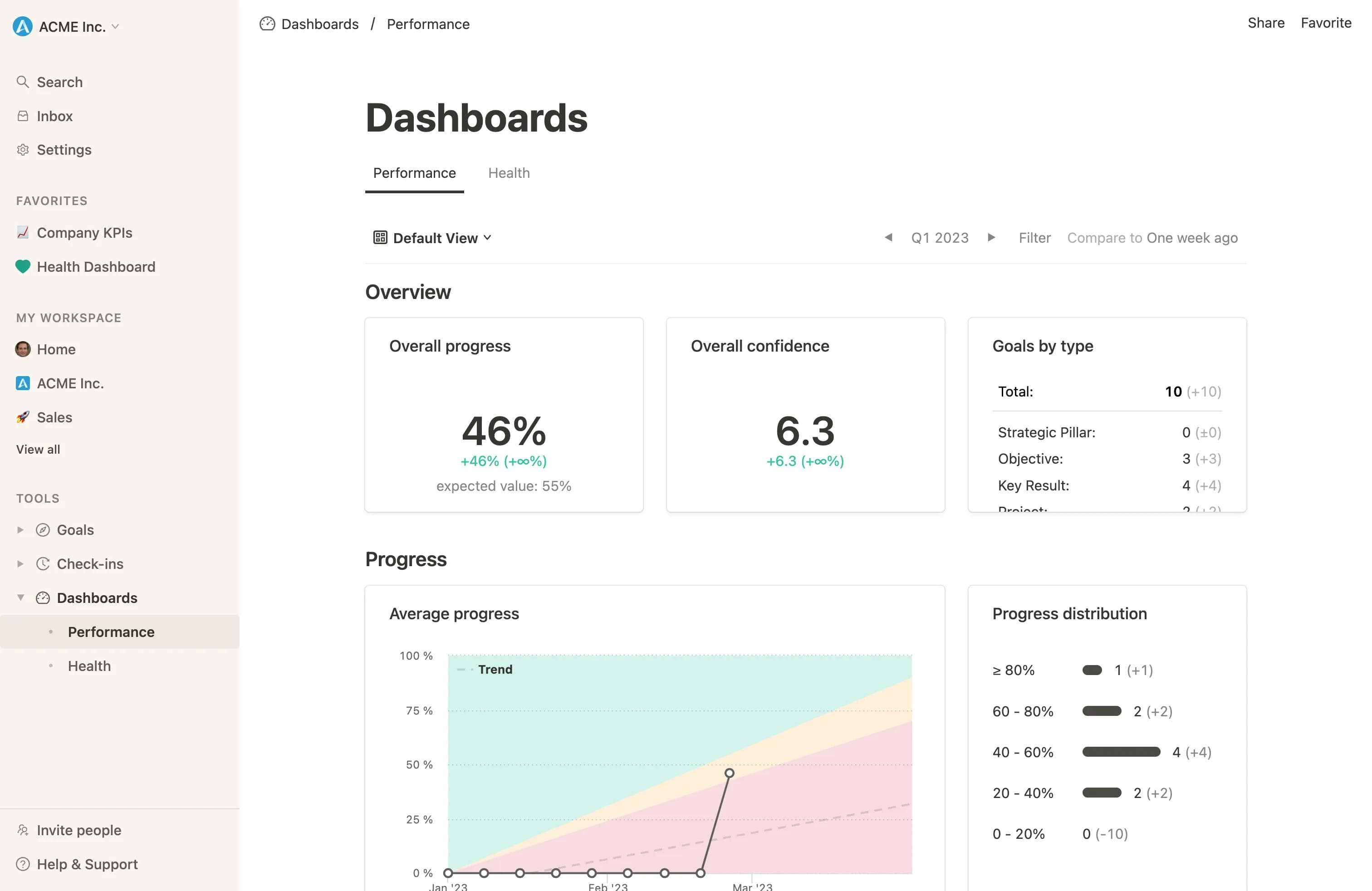
The Health Dashboard helps with a health and quality check of all OKRs. This ensures that the entire OKR process is running smoothly and that everyone is adhering to the agreed OKR rules. The so-called breakdown in this dashboard is particularly useful for reporting.
It states:
- The total number of goals for each team
- The goals that still have issues, e.g. invalid parent goals, missing property values or invalid measurement types
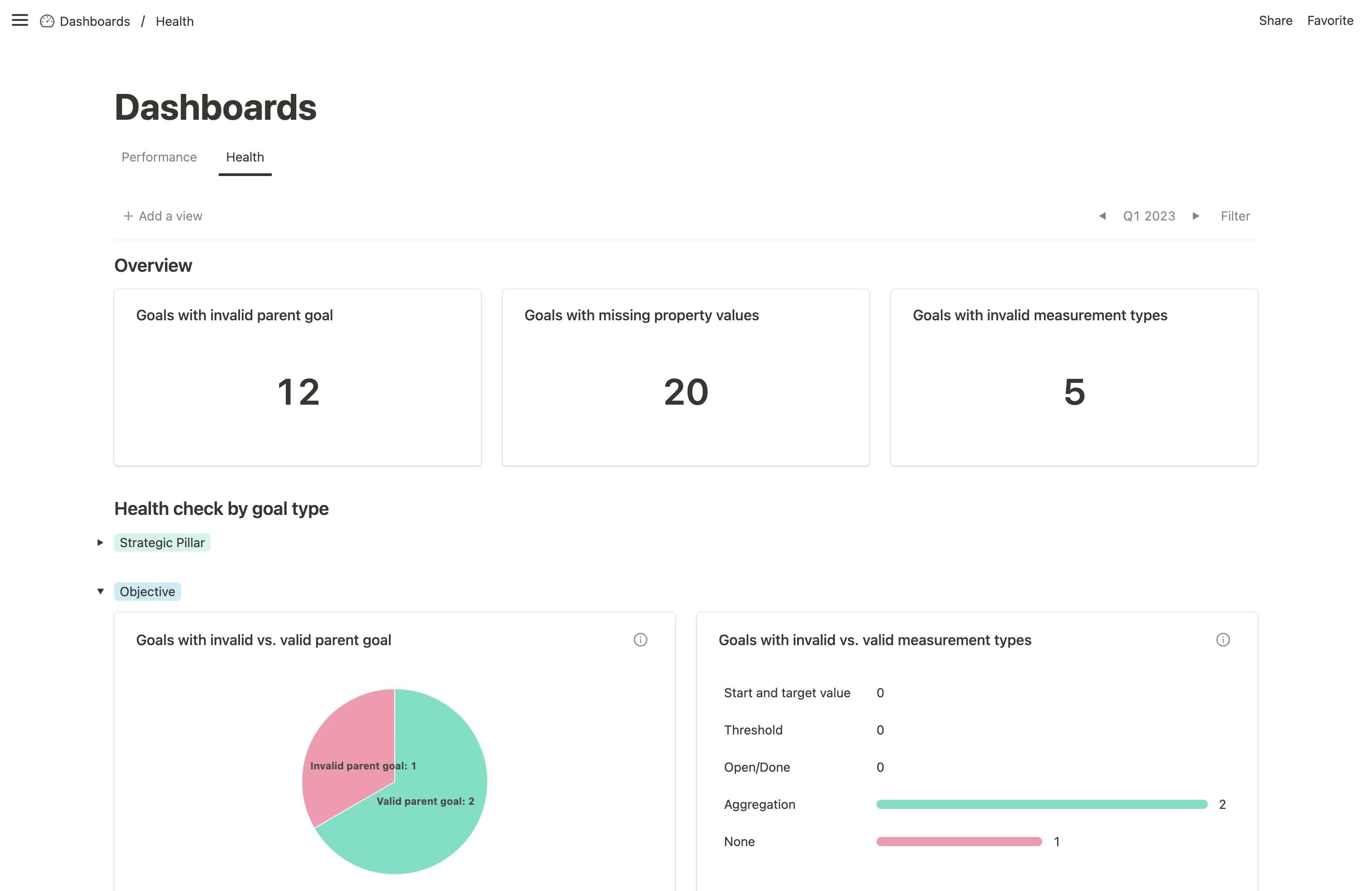
OKR reporting: FAQ
How can I best document OKRs?
The best way to document OKRs is with OKR software. This makes it easier to define OKRs, present them clearly, and track progress.
How do I create an OKR status report?
OKR reporting requires information about the OKR progress to be collected. This can be done, for example, with the help of suitable software in an individually designed dashboard. Once the required data is available, it can be prepared in a report format. This report should include the status of each OKR, progress made, any obstacles, and action plans for moving forward.
What is OKR tracking?
OKR tracking and OKR reporting are often used interchangeably. Both terms refer to the process of monitoring and measuring progress toward achieving OKRs. OKR tracking describes the entire process of measuring progress, while OKR reporting refers to the moments when results are specifically recorded in writing (or verbally), presented, and discussed – for example, in weekly check-ins or in the OKR review.
What is the difference between OKR and KPI?
OKRs (Objectives and Key Results) are goals that strive for change. They link inspirational, qualitative goals (Objectives) with measurable goals (Key Results). KPIs (Key Performance Indicators), on the other hand, are metrics that measure the status quo or past performance of an organization. Key Results can include KPIs in their wording, but do not have to. Overall, KPIs help monitor performance and identify problems. OKRs strategically align an organization, solve problems, improve processes, and drive innovation.

